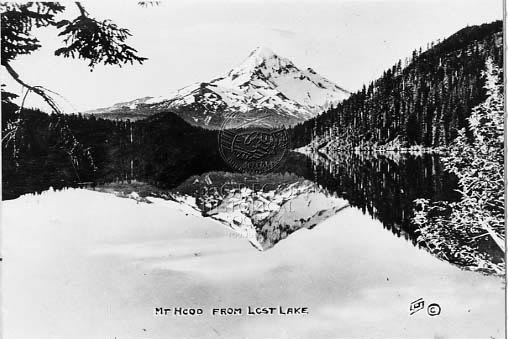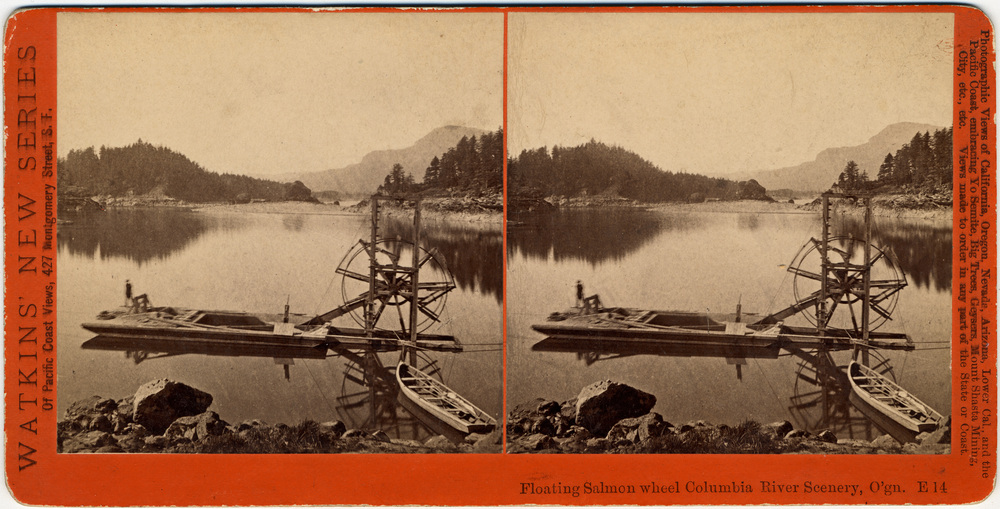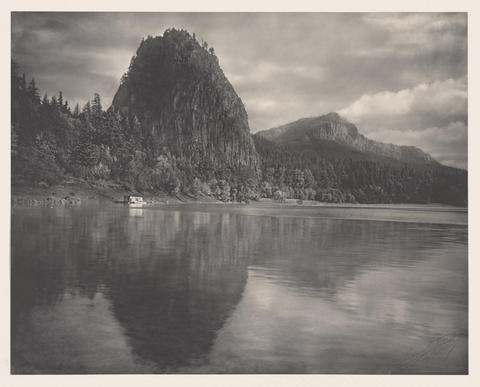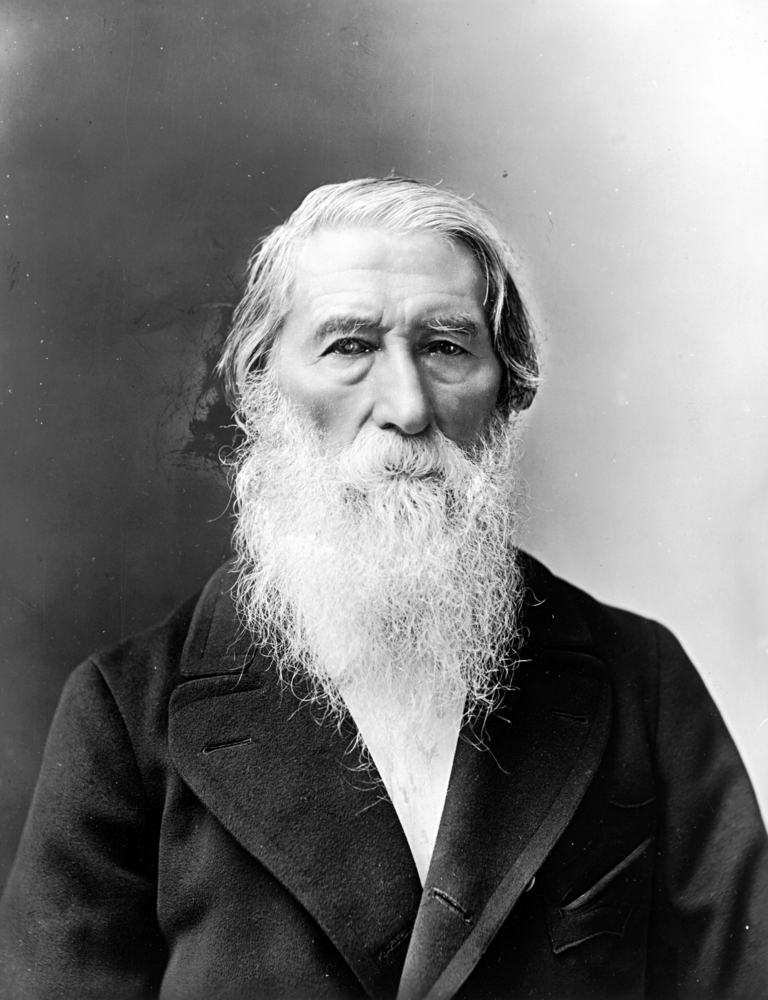As the Oregon State Highway Department’s first staff photographer, Ralph Gifford helped popularize the state’s newly built scenic highways. His images will forever be linked with what is likely Oregon’s longest running state-supported tourism campaign, which started in the late 1930s and ran for three decades, with the slogan “Cool Green Vacationland.”
The artistic and commercial representation of Oregon through scenic photographs began in the 1860s. Although photographic images taken along the Columbia River by Carleton Watkins during that decade may have been the first scenic photos of Oregon to achieve widespread popularity, by 1900 many other photographers were documenting the state’s landscapes and people. Among them was Benjamin Gifford, who operated studios in Portland and The Dalles and was known for his images of the Columbia River Highway, central Oregon, the Portland area, and the Indigenous people who lived on or near the Warm Springs Reservation.
Gifford’s son Ralph was born in Portland in 1894, and he worked in his father’s studios as a boy. He married Wanda Muir Theobald in 1918 and established a studio near the White River on the Mount Hood Highway, where he focused on scenic photography. Wanda Gifford was also known for her photography, which allowed her to keep the family afloat when she was widowed in 1947. In order to acquire the means for a venture into motion pictures with a Portland business partner, Ralph Gifford sold much of the family’s photo business in 1928, including about twelve thousand of his father’s negatives, to Sawyer’s Scenic Photos, based in Portland.
The Depression made life increasingly difficult for commercial photographers who operated sole proprietorships, but it was also a time when there were technological advances in photography, including color film, which involved considerable risk. Fortunately for Gifford, his background and experience fit neatly with the Oregon State Highway Commission’s decision in 1936 to establish a “travel and information department” in the Oregon State Highway Department. That August, he was hired as the department’s first “cameraman” to help increase the number of out-of-state tourists using Oregon’s highway system. The state had no camera or darkroom when Gifford arrived, Wanda Gifford later recalled, so he offered to use his own equipment. As a result, his employment with the state was flexible, and he was able to continue his commercial work on the side.
The Giffords operated a studio in Salem, where they made many of Ralph’s landscape images into postcards or view sets that were sold as souvenirs. But he was best known for his work as Oregon’s cameraman, generating a wide-ranging portfolio of scenic shots that were used for years to illustrate advertisements and magazine articles promoting tourism in the state. His knowledge of motion pictures was put to use by the Highway Commission in two color films, The New Oregon Trail (1941) and Glimpses from the Oregon State Parks (1947).
Gifford wrote in 1943 that his main aim as a photographer was to “visually educate the traveling public as to Oregon’s scenic and vacation possibilities.” Consequently, he made extensive use of the state parks that were being created along highways in Oregon, especially on the coast. He also popularized, as did other photographers, land in federal ownership, including Crater Lake, Oregon Caves, Mount Hood, and the high Cascades. His scenic repertoire was broad, one that highlighted Oregon’s rivers, cities, parks, and pursuits such as agriculture and fishing.
Ralph Gifford died of a heart attack in 1947 while on a combination business trip and photo shoot in Ontario, Oregon. Wanda Gifford took over the studio in Salem and continued selling photographs through the mid-1950s. Their son Ben, who had been born in 1923, worked as a scenic photographer in the family shop after his father died until 1955, when he began a twenty-seven-year-long career as an engineer with the Oregon State Highway Department. Wanda Gifford died in 1989; Ben Gifford died in 1996. The work of all four of the Gifford photographers is held by the Oregon State University Archives in Corvallis. The breadth of Ralph Gifford’s scenic photography is also represented at the Oregon State Archives in Salem.
-
![]()
Ralph Gifford, c.1940.
Courtesy Oregon State University Libraries
-
![]()
Gifford and family on Oldsmobile, Mount Hood in distance, c.1925.
Courtesy Oregon State University Libraries
-
![]()
Diamond Lake and Mount Thielsen, 1940, by Ralph Gifford.
Oregon Historical Society Research Library, Oregon Journal, 005660
-
![]()
Lost Lake and Mount Hood, by Ralph Gifford.
Oregon Historical Society Research Library, 019676
-
![]()
Deschutes River, 1949, by Ralph Gifford.
Oregon Historical Society Research Library, 007130
Related Entries
-
![Benjamin A. Gifford (1859–1936)]()
Benjamin A. Gifford (1859–1936)
Benjamin Arthur Gifford was one of Oregon’s most prolific commercial la…
-
![Carleton Emmons Watkins (1829-1916)]()
Carleton Emmons Watkins (1829-1916)
Carleton Emmons Watkins was a prominent San Francisco-based photographe…
-
![Dorothea Lange in Oregon]()
Dorothea Lange in Oregon
One of America’s best-known photographers, Dorothea Lange captured some…
-
![Lily Edith White (1866-1944)]()
Lily Edith White (1866-1944)
Photographer Lily White once professed: "Alone—controlling the power, d…
-
![Peter Britt (1819-1905)]()
Peter Britt (1819-1905)
Peter Britt is best known as an accomplished photographer and horticult…
Map This on the Oregon History WayFinder
The Oregon History Wayfinder is an interactive map that identifies significant places, people, and events in Oregon history.
Further Reading
Landis, Lawrence. “OSU’s Gifford Collection: Three Generations, Two Oregon Staters.” The Oregon Stater 80.5 (October 1996): 27.
“Biographical Note” in finding aid prepared by Lawrence A. Landis with update by Elizabeth Nielson for Ralph I. Gifford Photographs, circa 1910s-1947; http://archiveswest.orbiscascade.org, accessed January 3, 2020.










